Monday 26 March 2012
German horse breeds
The horse had always an important position in Germany. Horse riding is a wonderful hobby. It enjoys great popularity in Germany, where at least 1.6 million people are riding, carriage riding or breeding.
The German saddle horse is not a horse breed but it is the category for warmblood horses which are bred in Germany like for example the Bavarian Warmblood, German Warmblood, Hanoverian, Holsteiner, Warmblood Mecklenburg, Oldenburg horse, Rhine Warmblood, Senner horse, Trakehner, Westfalen horse, Wurttemberg Warmblood, Warmblood Zweibrücker.
The German saddle horse is not a horse breed but it is the category for warmblood horses which are bred in Germany like for example the Bavarian Warmblood, German Warmblood, Hanoverian, Holsteiner, Warmblood Mecklenburg, Oldenburg horse, Rhine Warmblood, Senner horse, Trakehner, Westfalen horse, Wurttemberg Warmblood, Warmblood Zweibrücker.

Holsteiner

Trakehner

Oldenburg horse
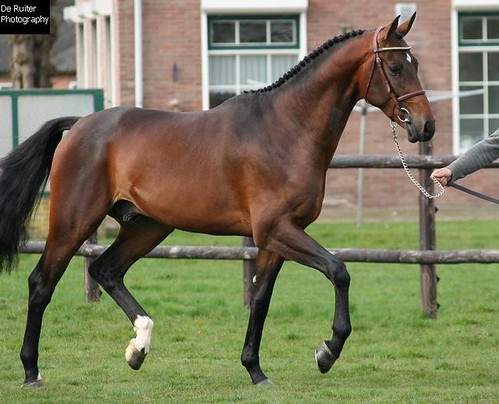 Rhine Warmblood
Rhine Warmblood
The breeding aim of a German saddle horse is to get a fertile, healthy and good-natured horse. Out of the many German horse breeds is the Hanoverian one of the most known breeds.
The Hanoverian
the Hanoverian is bred in Germany and is one of the oldest, most common, and most successful of the warmbloods. It is mainly used for dressage, show jumping, eventing, show hunters, and leisure riding. Hanoverian horses are elegant, strong and robust and a very successful horse in the Olympic Games. The top Hanoverian-branded international dressage horses are Salinero, Satchmo 78, Sunrise, Bonaparte 67, Brentina, and Wansuela Suerte. Since the Olympic Games in 1956 the Hanoverian has won 3 individual gold medals.
the Hanoverian is bred in Germany and is one of the oldest, most common, and most successful of the warmbloods. It is mainly used for dressage, show jumping, eventing, show hunters, and leisure riding. Hanoverian horses are elegant, strong and robust and a very successful horse in the Olympic Games. The top Hanoverian-branded international dressage horses are Salinero, Satchmo 78, Sunrise, Bonaparte 67, Brentina, and Wansuela Suerte. Since the Olympic Games in 1956 the Hanoverian has won 3 individual gold medals.

These three Hanoverian geldings (Elvis VA, Bonaparte, and Satchmo) made up the gold medal-winning dressage team at the 2008 Beijing Olympics
Pictures: Google images
Friday 9 March 2012
Wild horses
The third basic wild horse was the Tarpan type horse. They lived in northern Asia and were used to dry climate. This wild horse developed into the tarpan horse. The tarpan horse died in the 19th century because the human race eradicated this species.
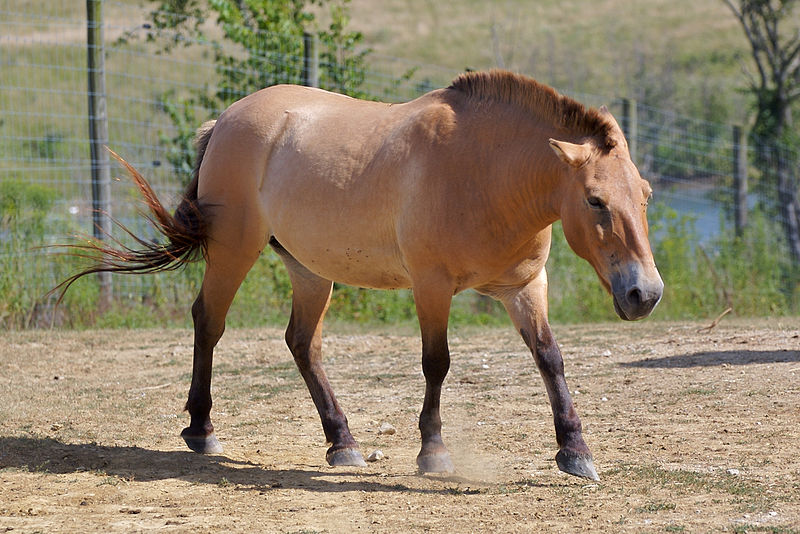
Przewalski horse
 |
| Ardennais horse
The Warmblood or Forest Horse lived in Europe’s forests and swamplands. Warm-blood horses still exist in Europe. They developed for example into the Ardennais horse which still exists today.
|
 |
| Tarpan horse |
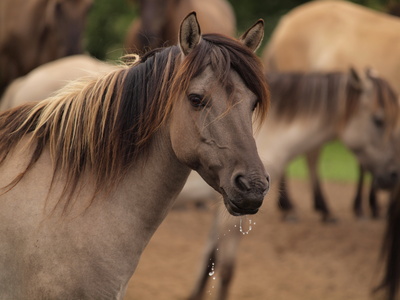  |
| Dülmener pony Sorraia horses Many wild horses died during the ice age but there are still a few wild horses left like the Exmoor, German Dülmener, Sorraia and Caspian. |

Przewalski horse
There is also the wild horse Przewalski horse. It is named after the Russian explorer Nikolai Michailowitsch Przewalski. This animal was very rare, even at its discovery. Today the wild horse just lives in zoos or in animal parks. It is about 134 to 146 centimetre tall and weighs between 240 and 300 kilograms. There have been a few projects since 1990 to bring the Przewalski again into the wild. In 1992 they flew the first horses into the Southwestern Mongolia.
Pictures: Google images
Friday 2 March 2012
The Eohippus
The history of horses started 50 million years ago. No animal has contributed more to humanity than the horse.
Their history began 50 million years ago in the forests of the northern hemisphere. There lived the first ancient horse called Eohippus. It did not look like the horse we know today. The Eohippus was the same height as a fox and had a mottled coat.
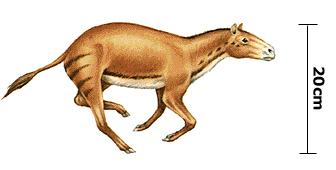
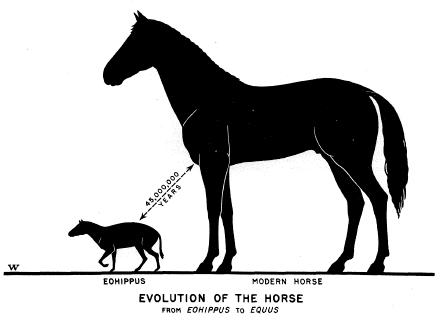

Przewalski's horse
Their history began 50 million years ago in the forests of the northern hemisphere. There lived the first ancient horse called Eohippus. It did not look like the horse we know today. The Eohippus was the same height as a fox and had a mottled coat.



Przewalski's horse
It was distributed only in central Europe and the southern inland area of North America. Its back line was arched, the Eohippus’ neck was short. It had four toes at the front leg and three at the hind leg. In the course of evolution, its toes eventually evolved into the hoof. The middle toe on the hind feet and the second toe on the front feet evolved into the hoof over time so that it could carry more weight. The horse’s body became longer and the animal started eating grass. After their extinction in Europe, they were found only in North American grasslands. It was here that they were able to stay alive. At that time the animal reached a height of about 116 cm, this is larger than the Shetland pony. This horse is similar to the Przewalski horse which is still alive today. The neck became longer, the coat changed and got a short mane. They moved from America to Europe and to Southeast Asian mainland. It evolved in Asia and Europe, into the ancient horse that we know today. It is the Przewalski's horse.
Pictures: google images
Pictures: google images
Subscribe to:
Posts (Atom)
